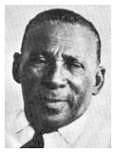History
of Puerto Rico
The Spanish Conquest
The Spanish Colony | USA Seizes Puerto
Rico
The Commonwealth Of Puerto Rico
Modern
Day
The Spanish Colony
During one period seven years passed and not one
ship came from Spain. Since Puerto Rico was a colony of
Spain and could not commerce with any other country,
contraband flourished with neighboring Dutch, French and
British islands. Even local officials were involved in
the smuggling business which became the most important
part of the economy in Puerto Rico. The coastal towns
of Cabo Rojo, Aguada, Fajardo and Arecibo were constantly
being visited by international pirates.
Puerto Rico was becoming a ethnically mixed society. The
people who lived on the countryside were called
"Jibaros". They lived in small huts and slepped
on hammocks like the aborigines. They ate native fruits
and vegetables and planted tobacco, sugar cane and
coffee.
In the mid 1770s, the 13 English colonies rebelled
against England. English ports of Jamaica and Barbados
were closed to all American vessels. Soon ships from the
USA were anchoring in San Juan eager to trade slaves and
foodstuffs for agricultural products including molasses
for making rum. Also, during the American war for
independence, some American ships took shelter here in
Puerto Rico.
In the 19th century tension began to grow between the
Puerto Rican Creole population and the Spanish minority
that ruled Puerto Rico's military and business affairs. On
September 23, 1868 a rebel force made up of hundreds of
brave men bearing guns, knives and machetes took over the
town of Lares and proclaimed the Republic of Puerto Rico.
This proclamation called all Puerto Ricans to arm against
the Spanish government and social injustice. They offered
freedom to slaves who joined them. This is known as
"El Grito de Lares" or The Cry of Lares.
Unfortunately for the rebels, the Spanish government had
recieved inside information about the rebel's plans. Troops
were sent in to stop the revolt before any other towns
were taken. The rebels and leaders fought courageously but were not
strong enough to stop the Spanish forces. The revolutionaries finaly
were hunt down, imprisoned and
many were slain.
"El Grito de Lares" served to draw
attention on the Puerto Rican
reality to the Spanish government. In the coming years Spain turned more generous
when it came to reform. On March 22, 1873 slavery was
abolished and nearly 30,000 slaves were freed. Also many of
the repressive rules were eliminated.
USA Seizes Puerto Rico
Puerto Rico, by
royal decree, was granted autonomy on November 28,1897.
The Charter of Autonomy granted Puerto Rico more autonomy
than ever before in the history of Puerto Rico. Puerto
Rico elected delegates to both houses of the Spanish
Courts. Puerto Ricans elected 35 members of the local
house of representatives also 8 of 15 members of the
local Administration Council. Local legislature set its
own budget and taxes. They accepted or rejected
commercial treaties concluded by Spain.
General elections were held in March and on July 17,1898
Puerto Rico's autonomous government began to function,
but not for long. The Spanish American War broke out in
April of 1898. On July 25,1898 Puerto Rico was invaded
by the USA. General Nelson A. Miles and 16,000 American
troops came in through Guanica located on the island's
southwestern shore. The Americans found little
opposition. The Spanish forces soon retreated and on
October 18, 1898 Puerto Rico's autonomous government was
officially changed to an American military government.
General John Brooke became the first American governor of
Puerto Rico.
The Spanish American War officially ended on December 10,
1898. The Treaty of Paris stated that Spain was to cede
Puerto Rico, Guam and Philippines to the USA. Cuba would
become a protectorate of the USA.
The military government lasted two years. On May 1, 1900
the US government approved the Foraker Law which changed
the military government to a civil government. Under this
new government the governor, his cabinet and
Higher House of Delegates (something like a senate) were
appointed by the President of the USA and approved by the
American legislature. A 35 member Local House of
Delegates was elected by popular vote. Also Puerto Ricans
voted for a Resident Commissioner who represented Puerto
Rico in the US House of Representatives but had no vote.
Puerto Ricans were distressed with this new government.
After having been granted autonomy by Spain, Puerto Rico
had now taken a step back to colonialism. The discontent
was such that in 1909 the House of Delegates refused to
pass any bills.
On March 2, 1917 President Woodrow Wilson signed the Jones
Law. This law granted Puerto Ricans American citizenship.
Also the Jones Law granted such freedoms as liberty of
speech, freedom of press, presumption of innocence until
proven guilty, the right to a trial before being
incarcerated and more. Also it created a Senate of 19
senators and a 39 member House of Representatives which
was elected by popular vote. The governor was still
appointed by President of the USA. The appointed
Governor, the President or the US Congress could veto any
law approved by the Puerto Rican Congress. Also
Puerto Ricans were now eligible to serve in the American
Armed Forces. Puerto Ricans took a major role in all of
the USA military conflicts from then on.
The Commonwealth Of Puerto Rico ![]()
The Spanish Conquest
The Spanish Colony | USA Seizes Puerto
Rico
The Commonwealth Of Puerto Rico
Modern
Day
COPYRIGHT © 2000-2010 William Figueroa
All Rights Reserved


